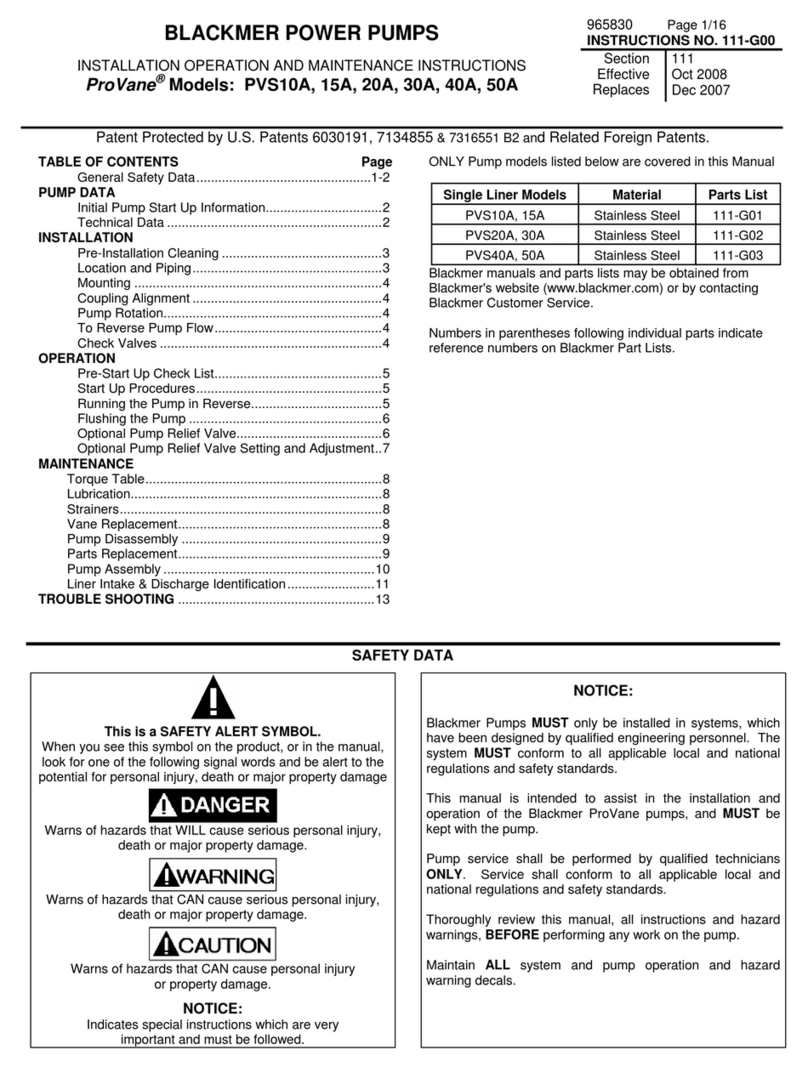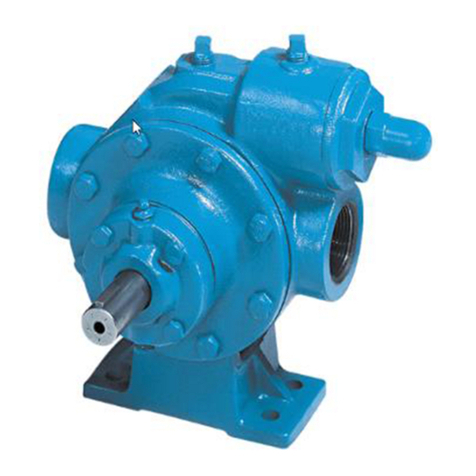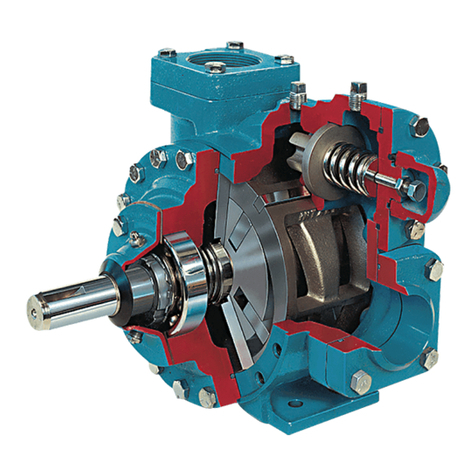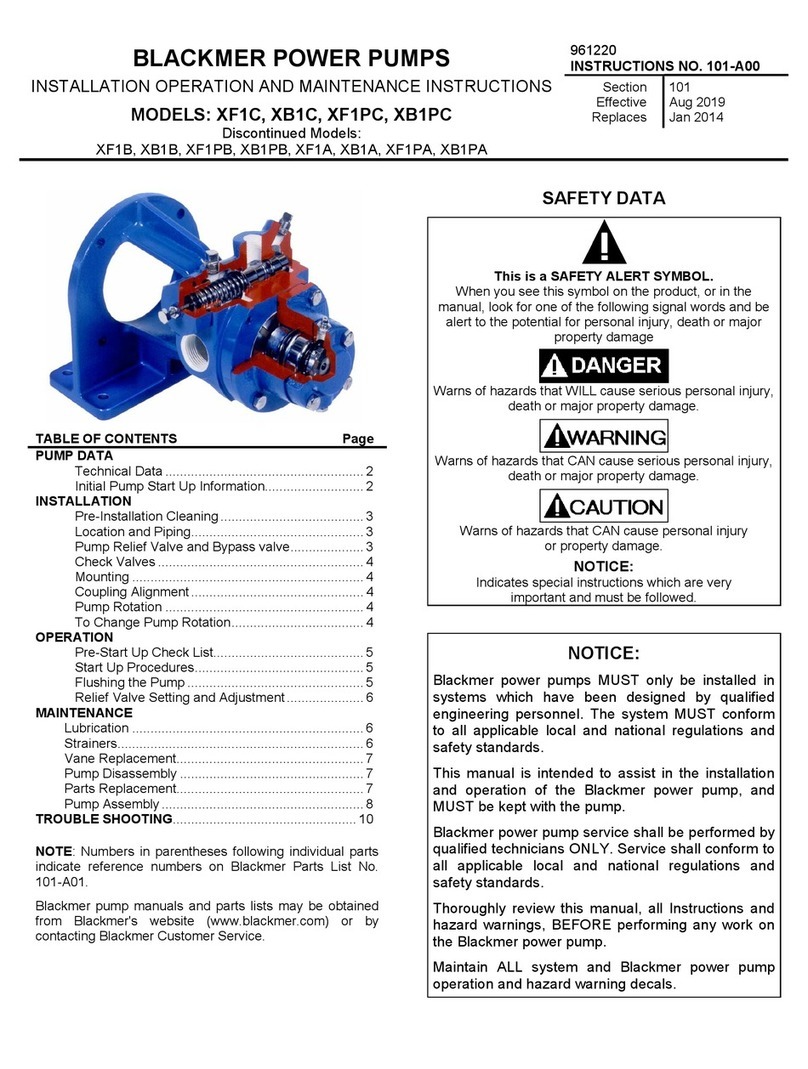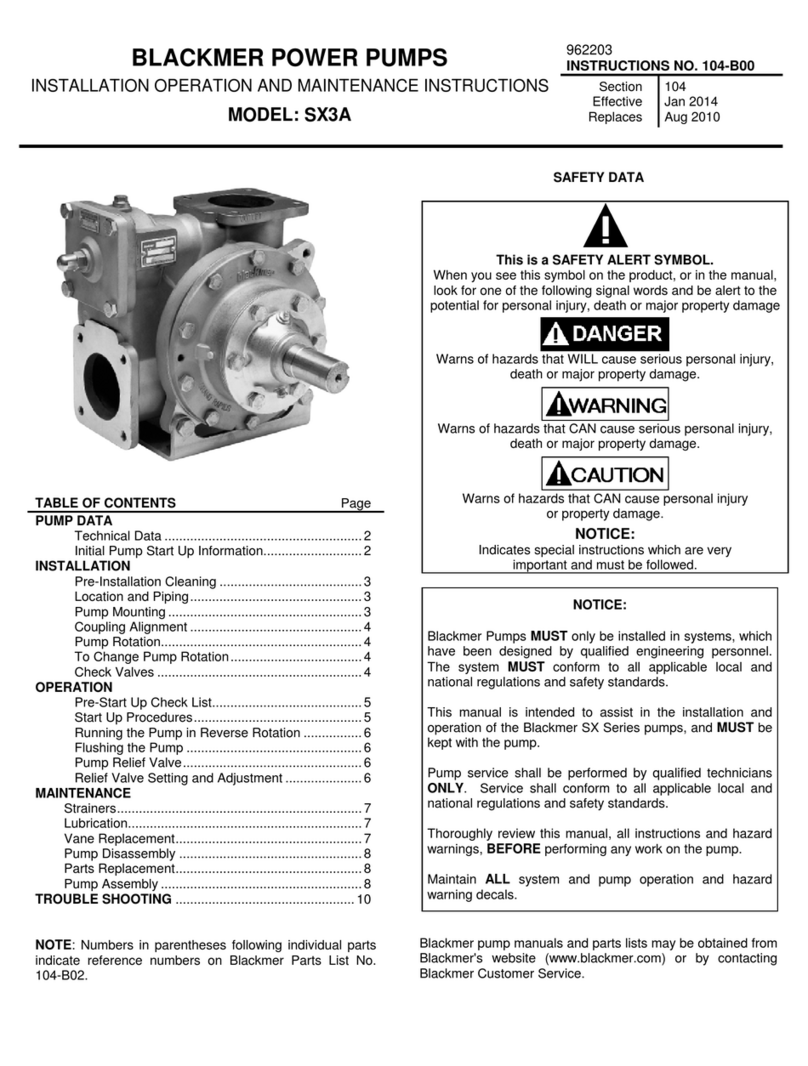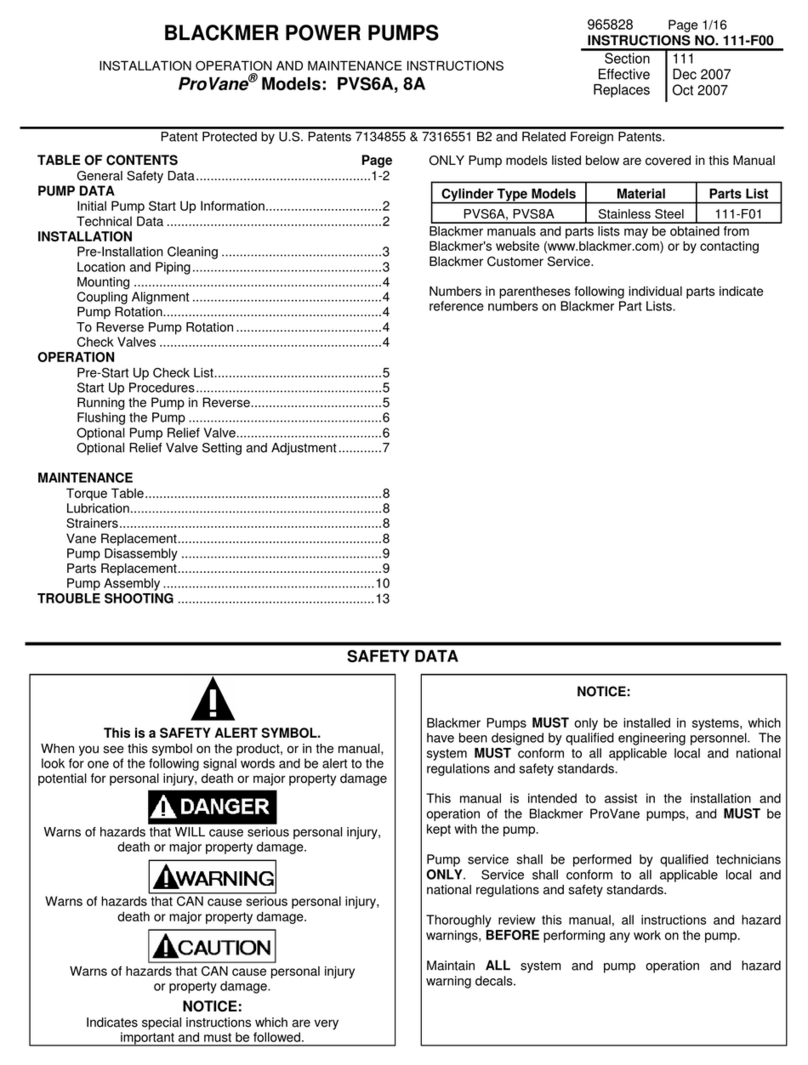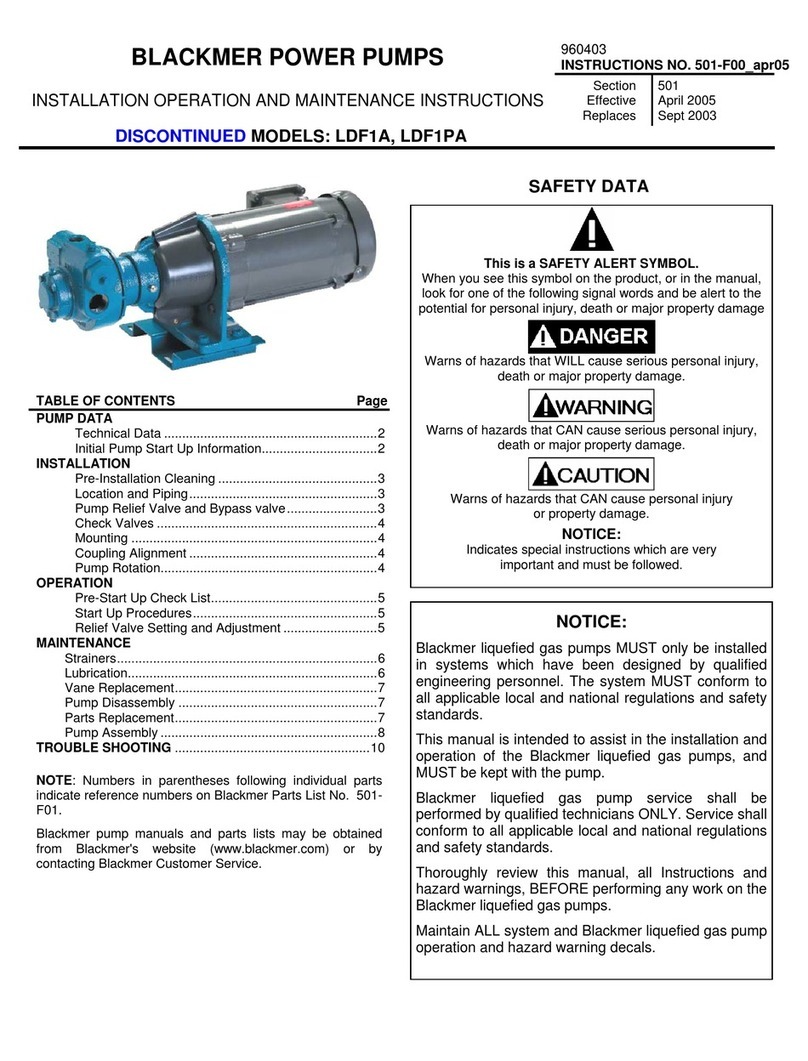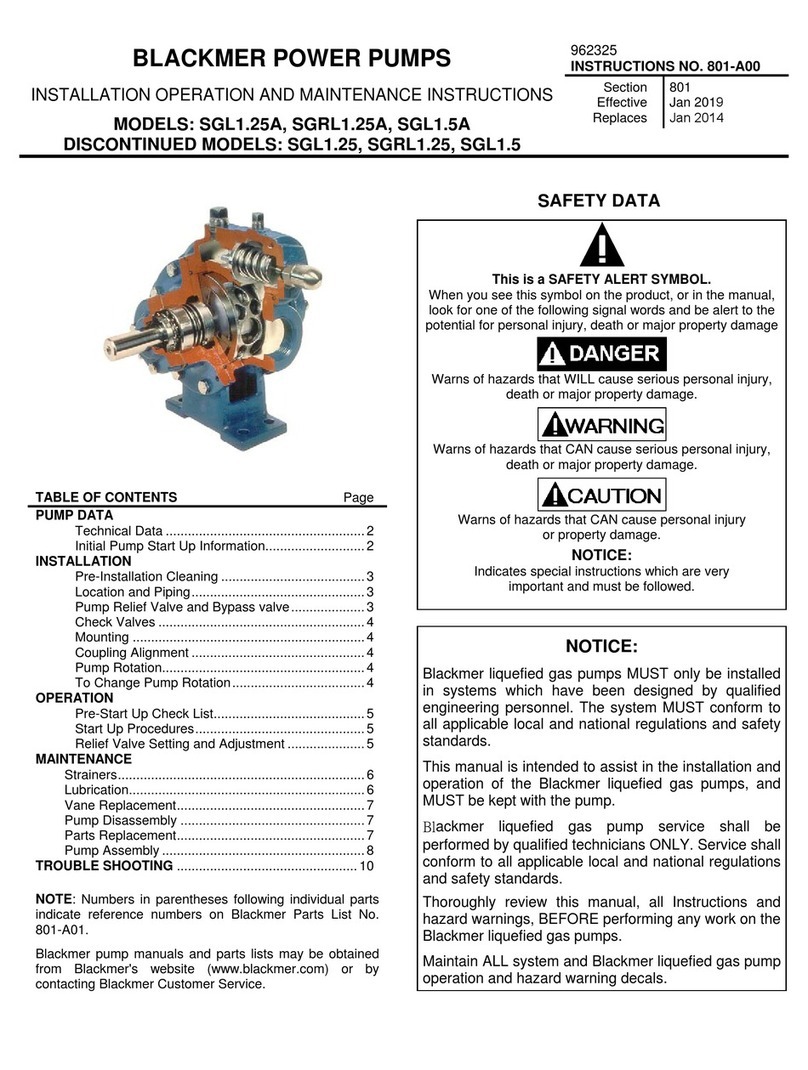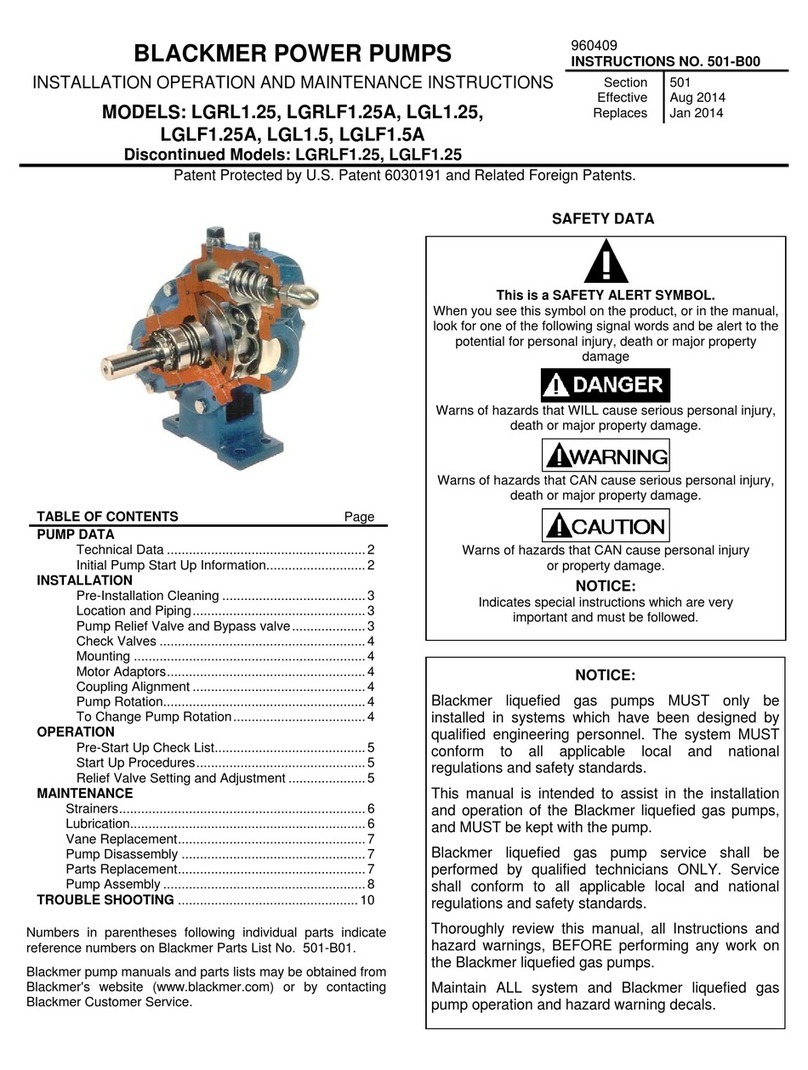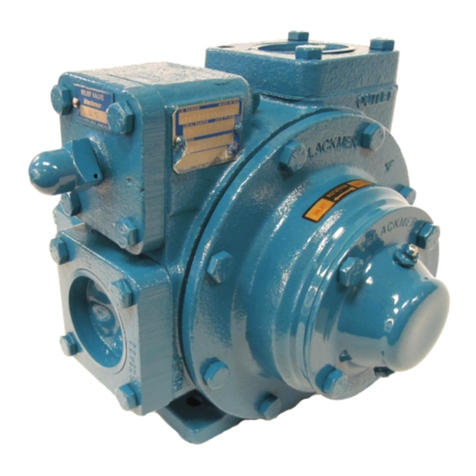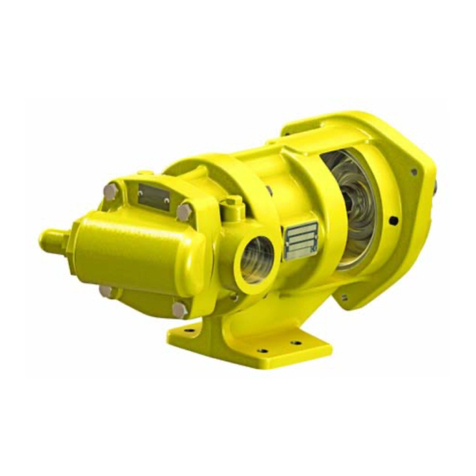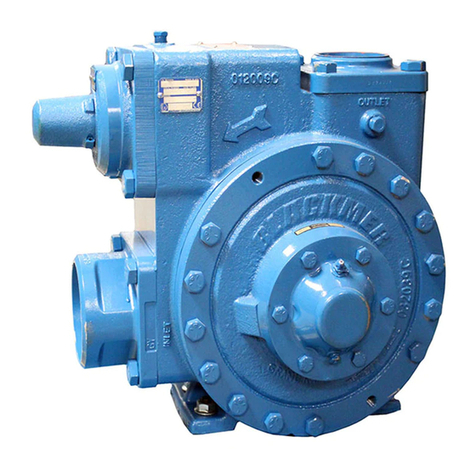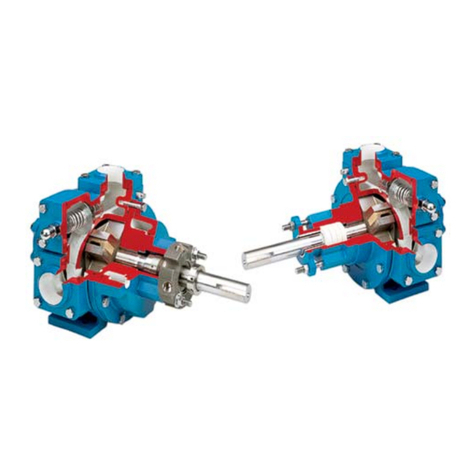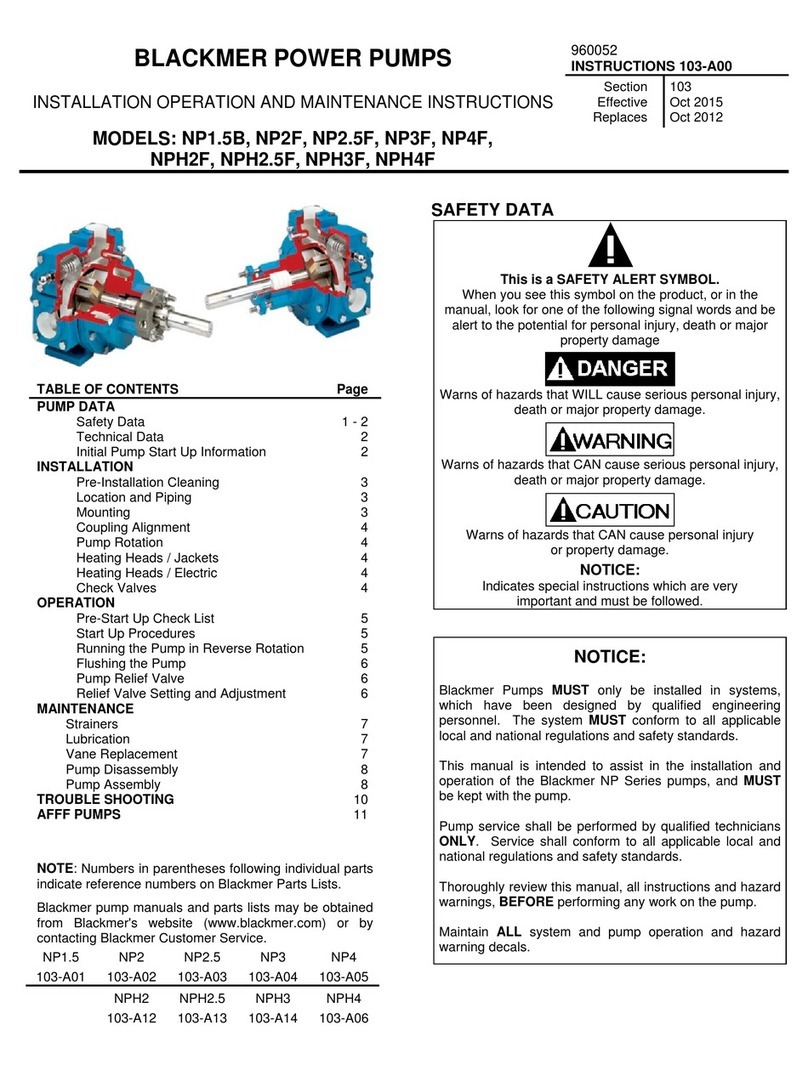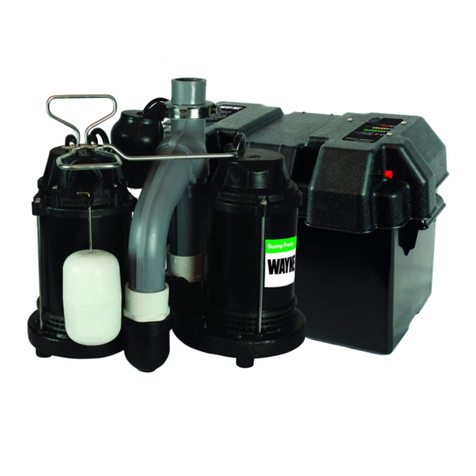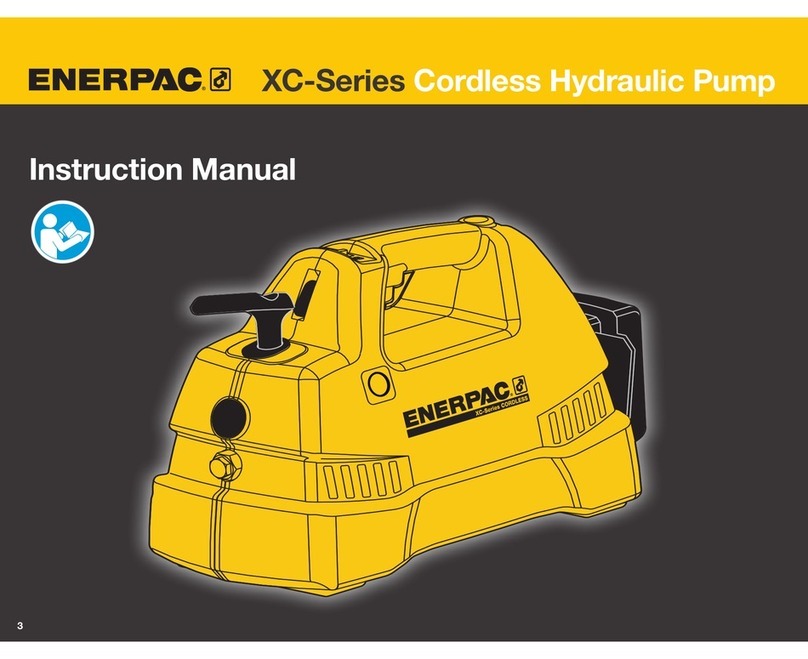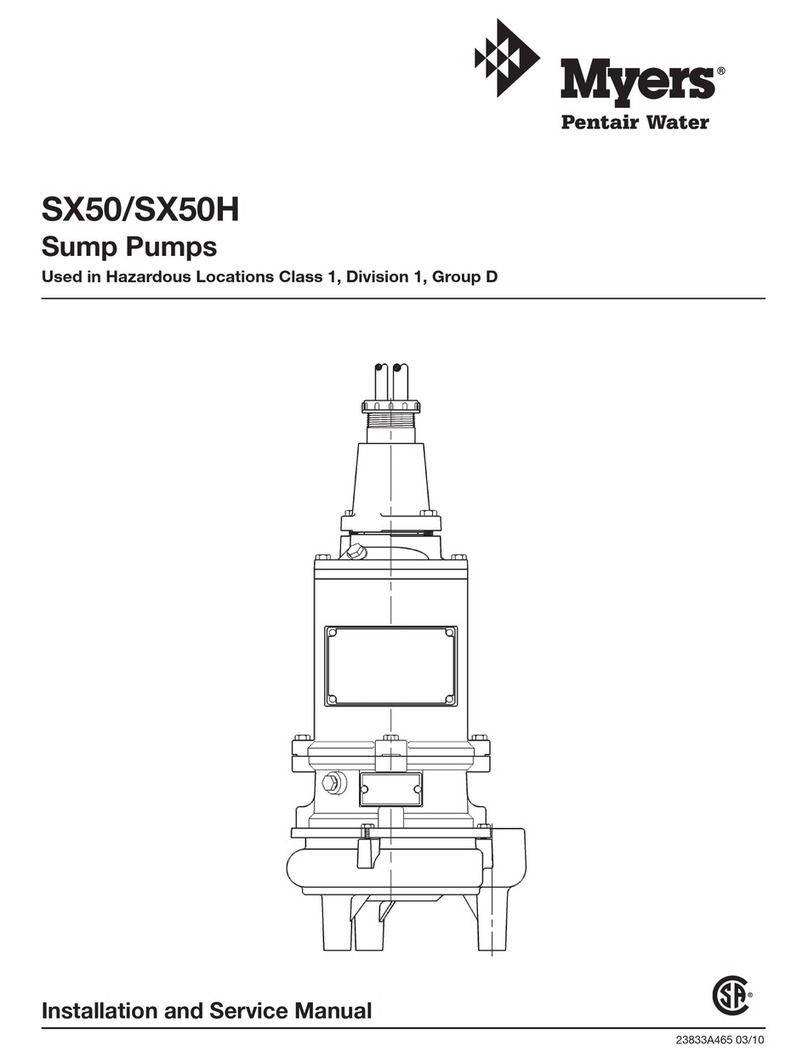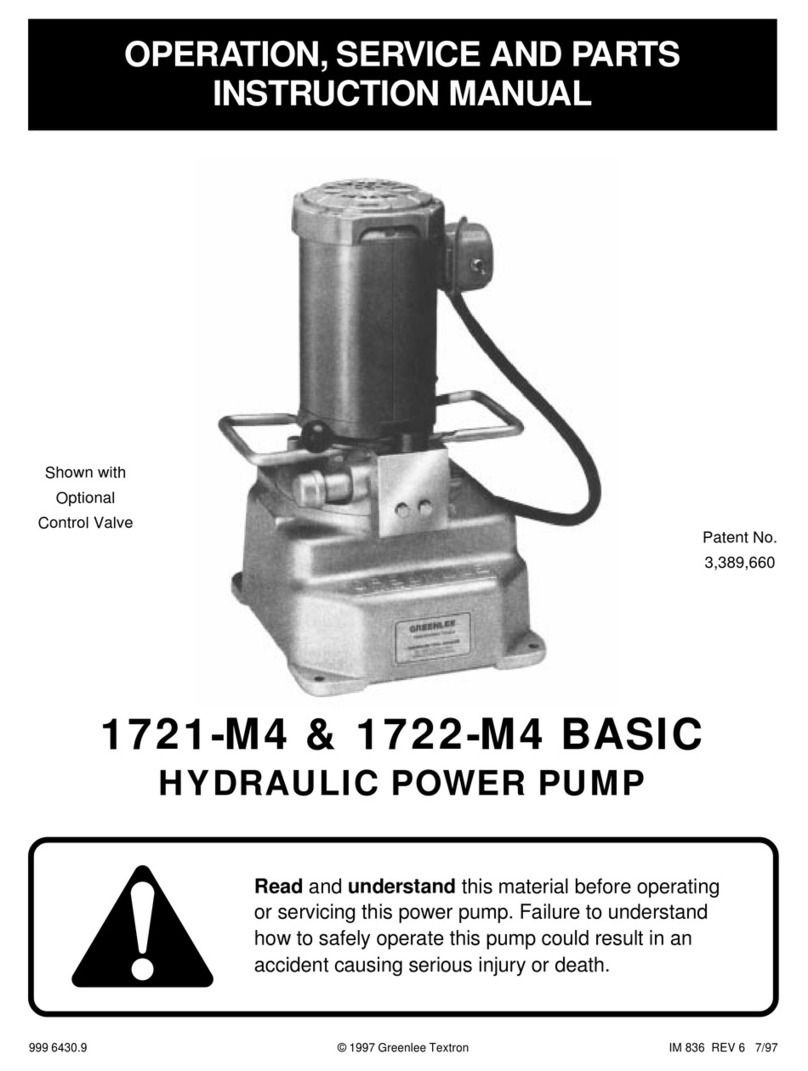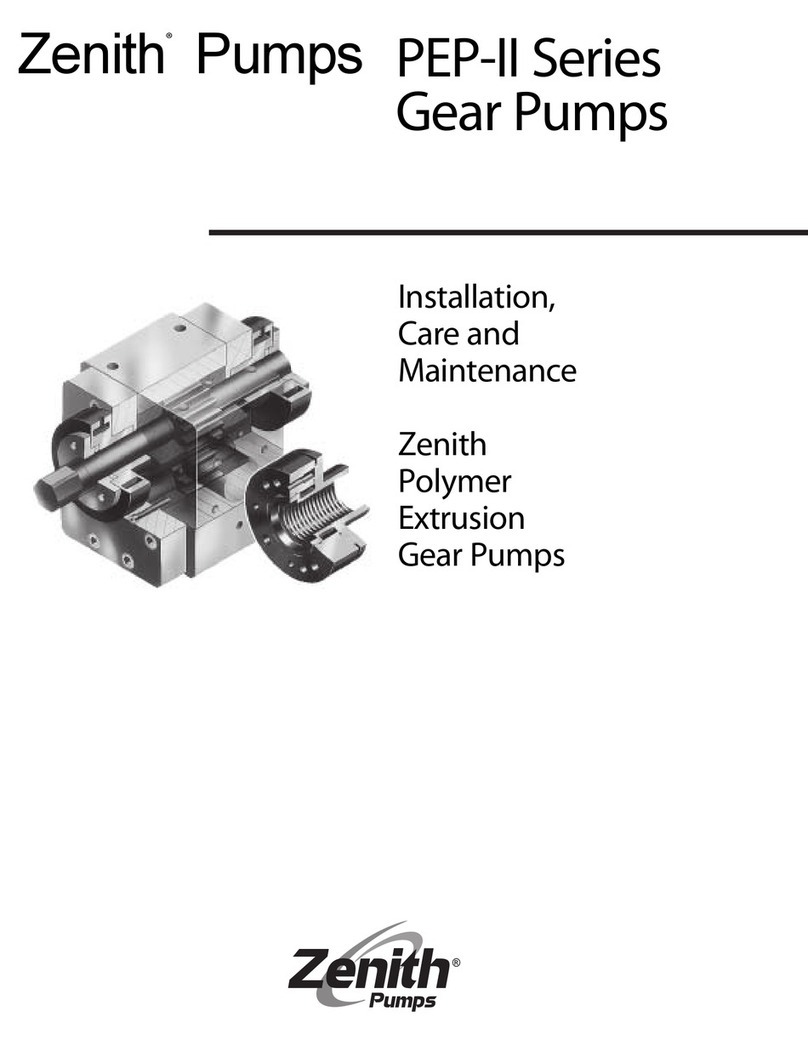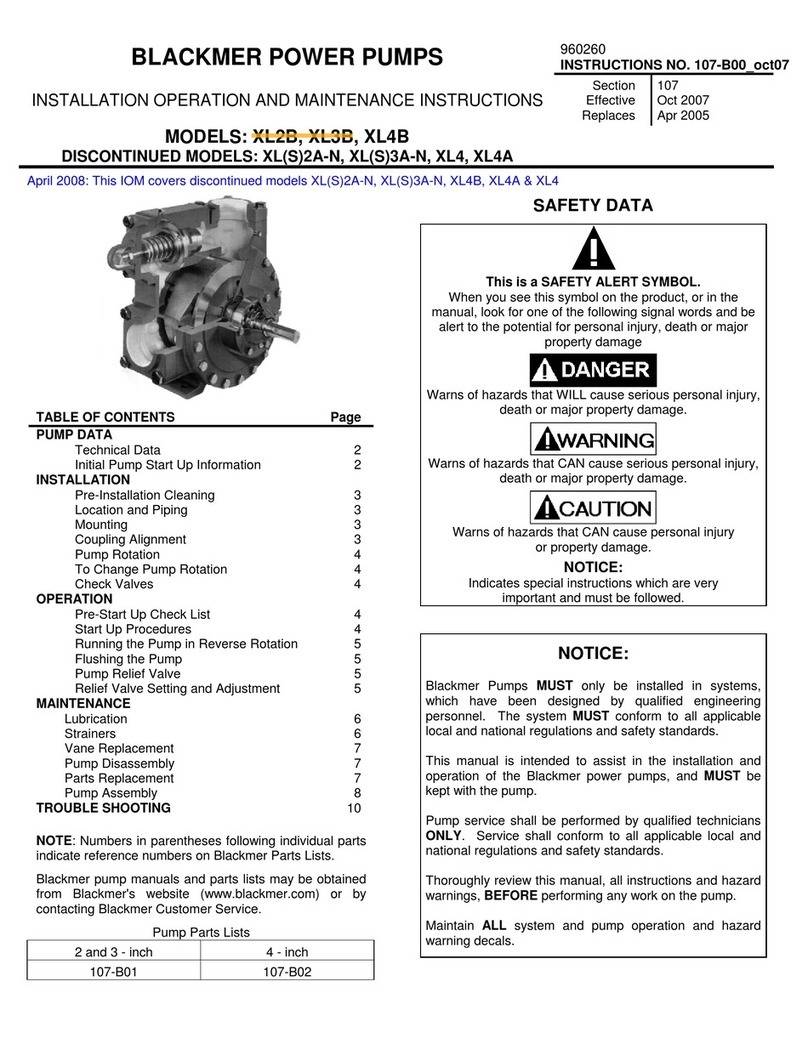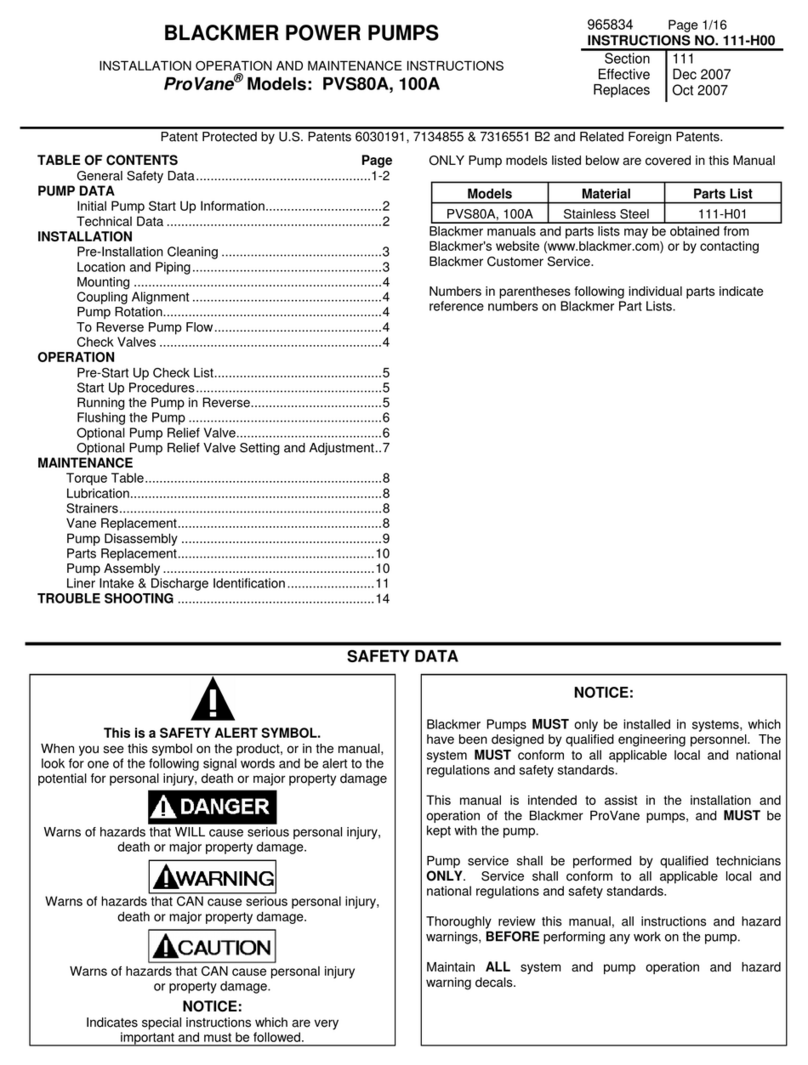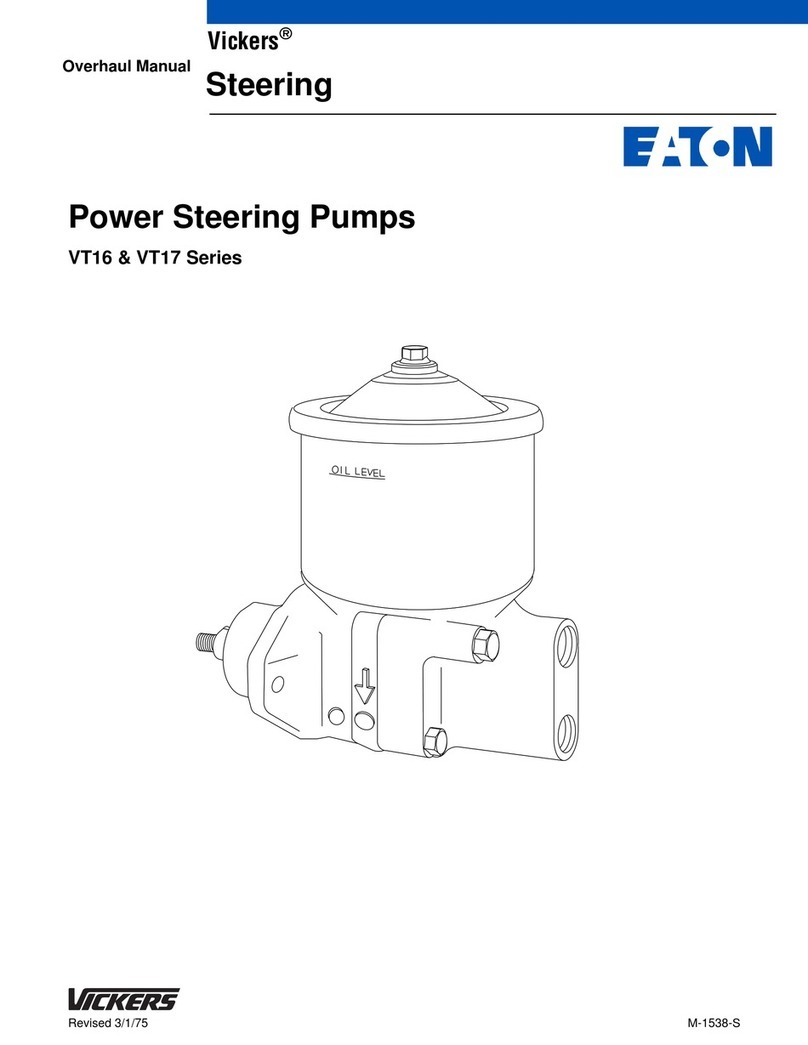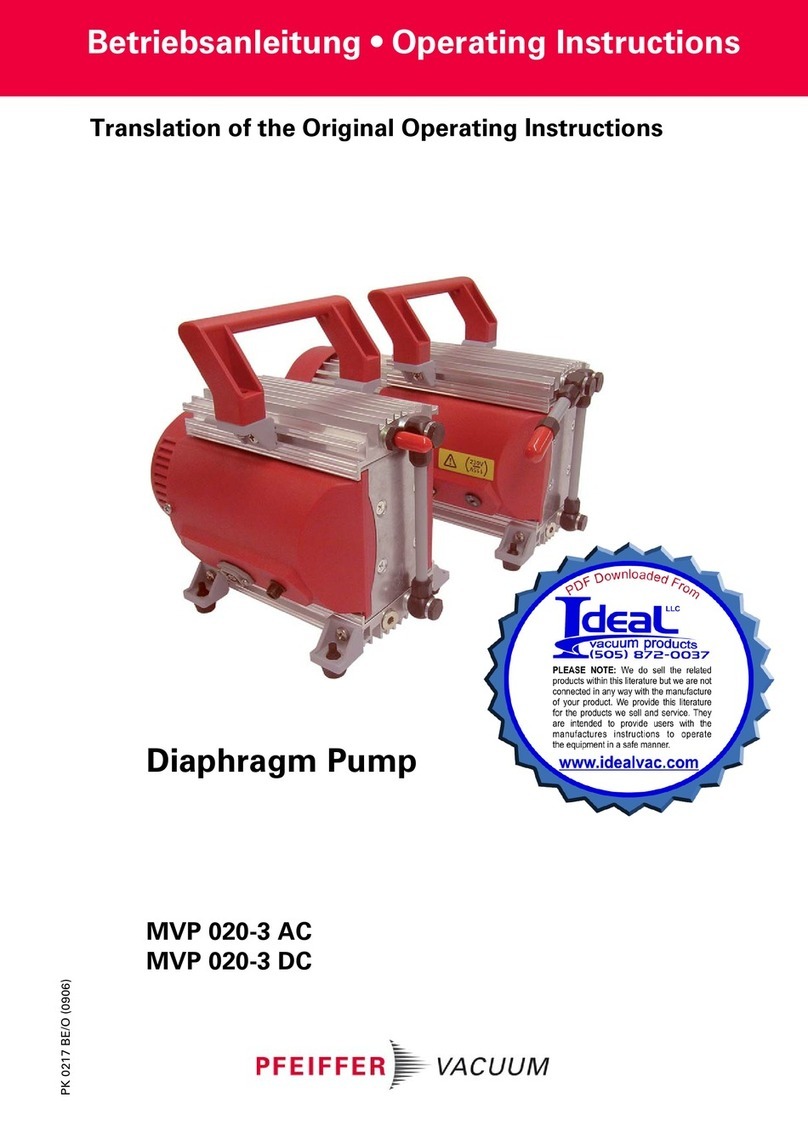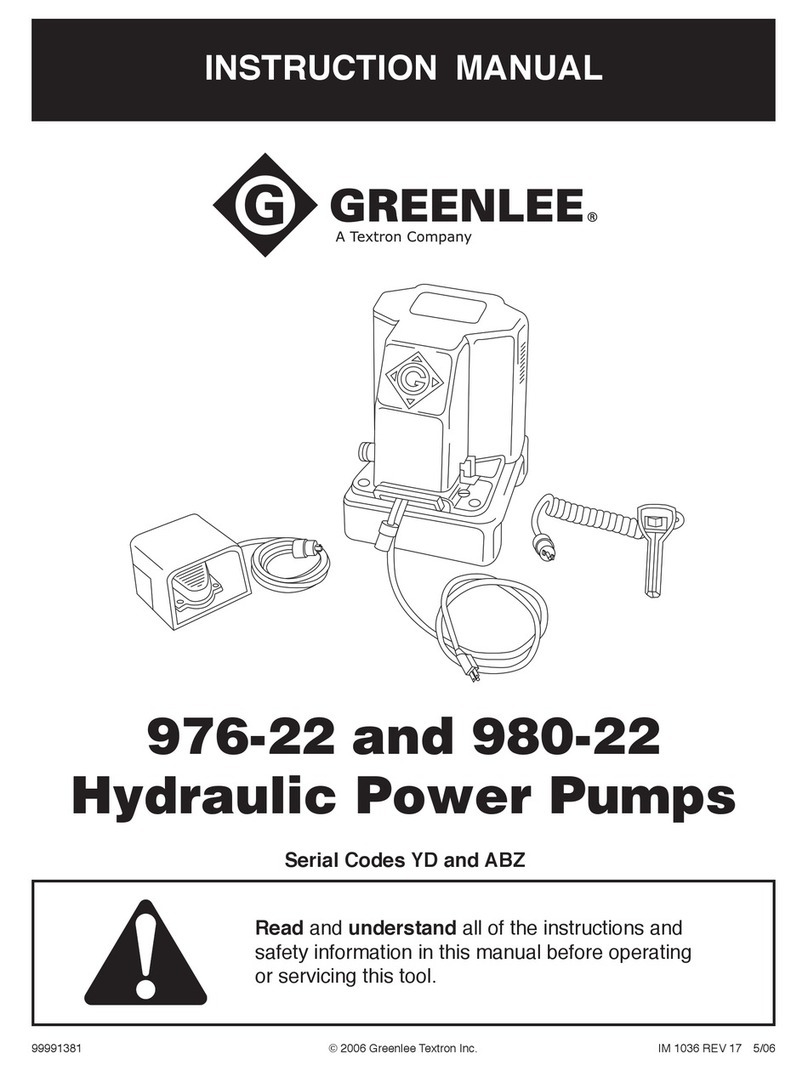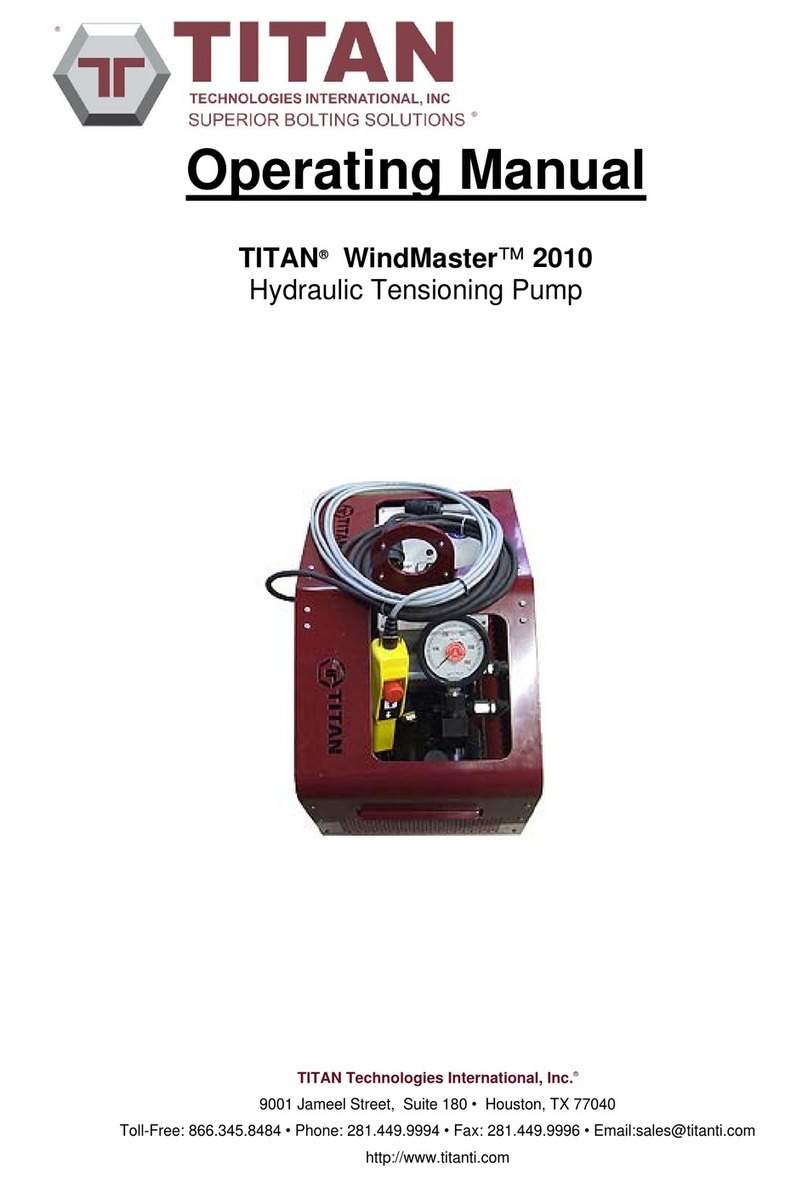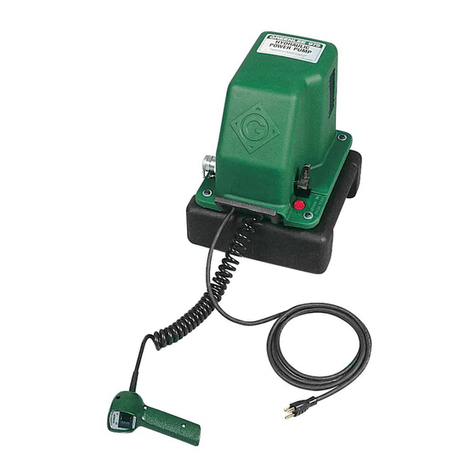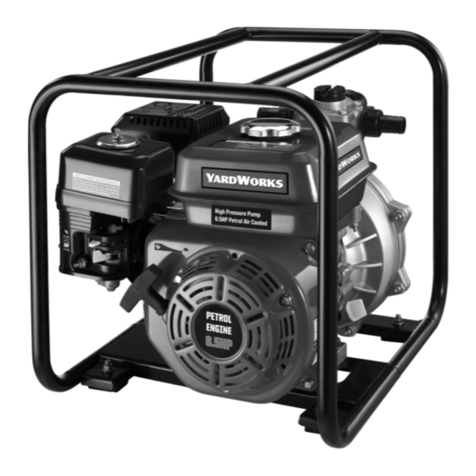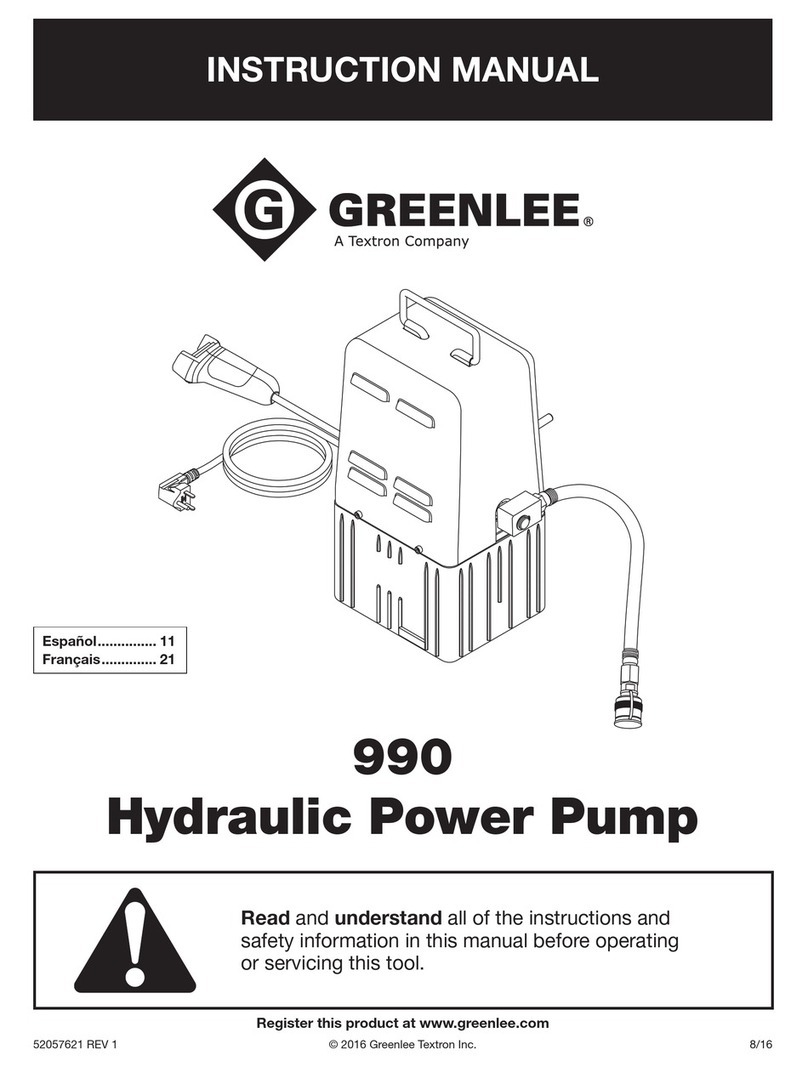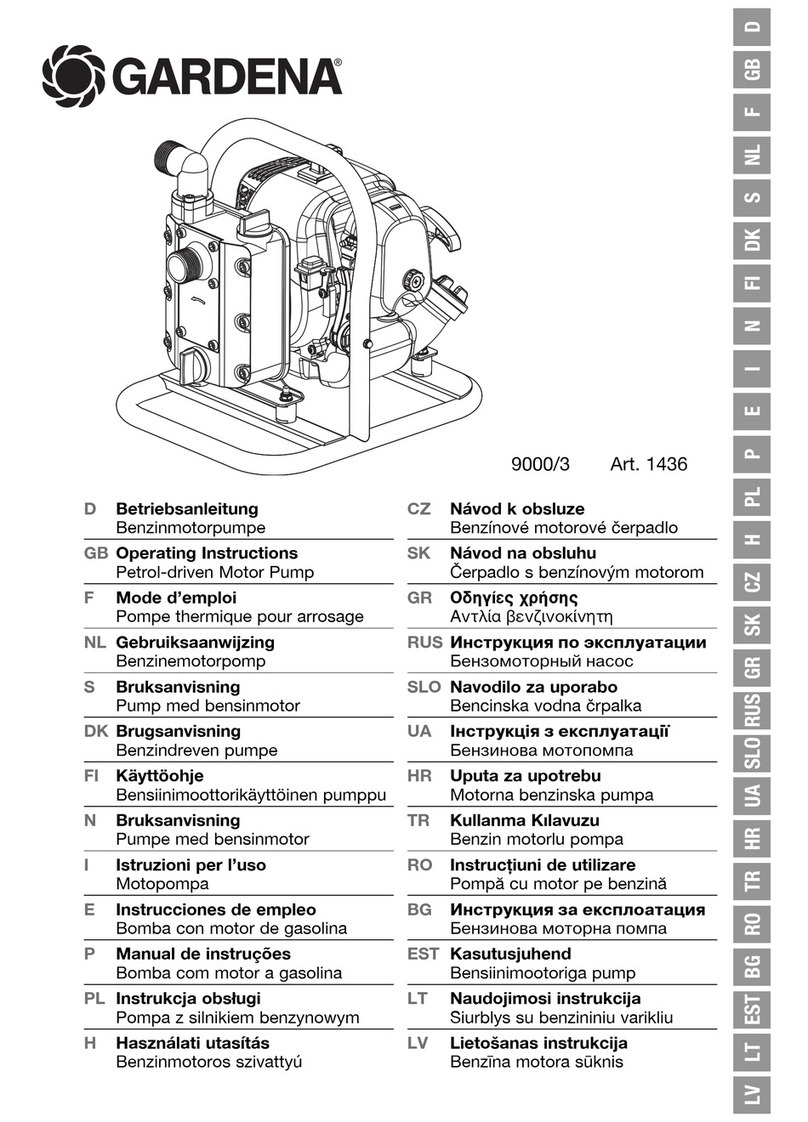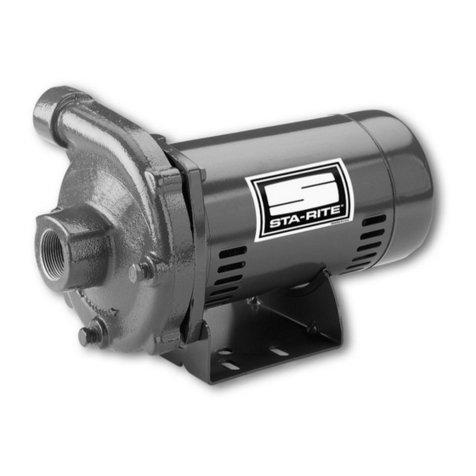
102-A00 page 9/16
MAINTENANCE: HXL6 and HXLJ8 MODELS
PUMP DISASSEMBLY – HXL6 and HXLJ8
NOTICE:
Follow all hazard warnings and instructions provided in
the “Maintenance” section of this manual.
Always use a lifting device capable of
supporting the full weight of the pump
assemblies.
Heavy assemblies can
cause personal injury
or porperty damage.
NOTICE:
Use a hoist and appropriate sling or lifting lugs attached
to the baseplate to lift the entire pump assembly.
Eyebolts attached to the pump, gearbox, or motor must
be used to lift that particular component only.
NOTICE:
Use a hoist and eyebolts installed in the threaded holes
located in the heads, discs, rotor and casing to lift the
heavy pump parts.
Note: If a seal or vanes are to be replaced, the pump may
be left in the upright position. If the rotor-shaft or liner is
to be removed, the pump will have to be placed on its
side for some operations.
1. Flush the pump per instructions in this manual. Relieve
pressure from the pump and system and drain as
required.
HXLJ8: A 3/4" plug (29) is fitted in each head to allow
draining the coolant.
2. Set the pump upright. Clean the pump shaft thoroughly,
making sure the shaft is free of nicks and burrs. This will
prevent damage to the mechanical seal when the
inboard head assembly is removed.
3. HXL6: Remove the inboard bearing cover capscrews
(28) and slide the inboard bearing cover (27A) and
gasket (26) off the shaft. Discard the bearing cover
gasket.
HXL8J: Remove the inboard bearing cover capscrews
(28) , head capscrews (21), and the head stud nuts
(21C). Slide the inboard bearing cover (27A) and gasket
(26) off the shaft. Discard the bearing cover gasket.
4. Remove the head capscrews (21). If necessary, place
head capcrews in the two tapped holes near the outer
rim of the head and tighten until the head separates from
the casing. Use a hoist to remove the head from the
casing, being careful not to damage the shaft.
The bearing, stationary seat and stationary O-ring will
come off with the head assembly.
HXLJ8: Remove the two head studs.
5. Remove the head O-ring (72) and disc (71) . If needed,
threaded holes are provided in the disc to break it free.
6. Remove the top vane then rotate the shaft by hand to
bring the next vane to the top until all the vanes have
been removed. If the vanes are swollen or jammed in
their slots , the rotor-shaft must be removed as described
below.
7. Set the pump on its side with the shaft pointing up.
8. Attach a hoist to the rotor-shaft, lift it out and set aside.
The pushrods, and rotating portions of the seal will come
out with the rotor-shaft.
9. Set the pump upright.
10. Remove the outboard head components as described for
the inboard side in steps 3 – 5.
11. Attach a hoist to the liner. Use a block of wood or piece
of brass against the end of the liner, and drive the liner
out of the casing with a hammer by tapping the outside
diameter of the liner.
PUMP ASSEMBLY – HXL6 and HXLJ8
Before reassembling the pump, inspect all component
parts for wear or damage, and replace as required. Wash
out the bearing/seal recess of the head and remove any
burrs or nicks from the rotor and shaft. Remove any
burrs from the liner.
NOTICE:
Use a hoist and eyebolts installed in the threaded holes
located in the heads, discs, rotor and casing to lift the
heavy pump parts.
Always use a lifting device capable of
supporting the full weight of the pump
assemblies.
Heavy assemblies can
cause personal injury
or porperty damage.
1. Set the pump casing upright.
2. Align the keyway in the top of the liner with the pin in the
top of the casing.
HXL6: Liner is symmetrical and can be installed in either
direction.
HXLJ8: The liner must be installed in the pump casing
with the word “INTAKE” cast on the liner toward the
intake port of the pump casing.
a. Uniformly tap the outer edge of the liner with a
rubber mallet to fully insert into the casing.
3. Start assembly on the OUTBOARD non-driven side of
the pump:
For a CLOCKWISE rotation pump, the INTAKE port is to
the left.
For a COUNTERCLOCKWISE rotation pump, the
INTAKE port is to the right.
Loosely assemble the outboard disc (71), head (20) (and
bearing cover (27) on the HXLJ8) to the casing (12). The
bearing, seal, O-rings, etc. will be installed later.
4. Set the pump on its side with the outboard head DOWN.
